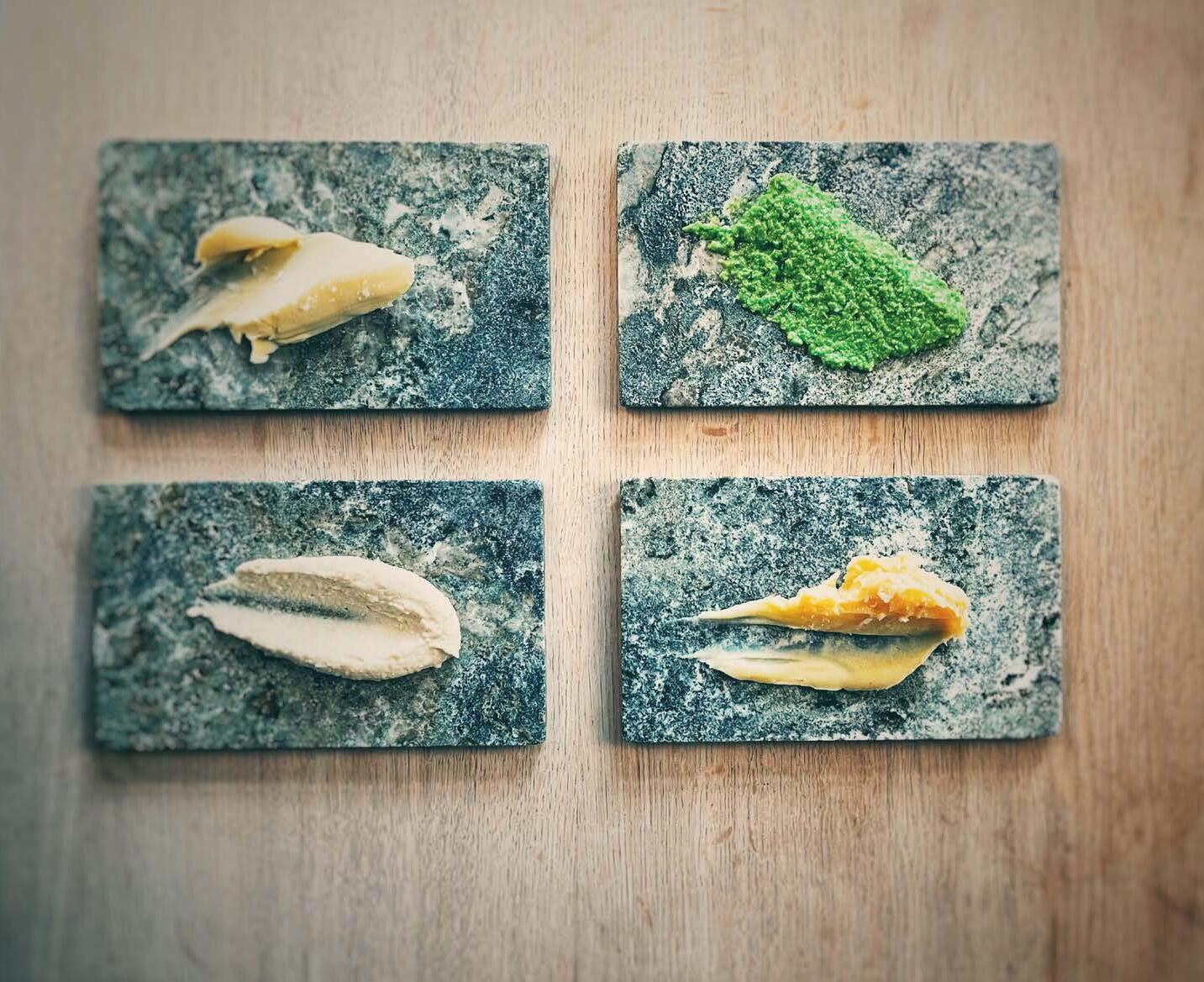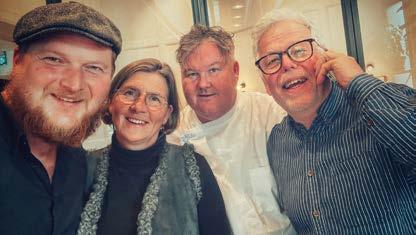
2 minute read
In Holy Birgitta’s pantry
from Visit Vättern 2023
by Runtvattern
Pilgrimsmat is a project aiming to offer traditional food to pilgrims on their way to Vadstena. With the help of historical research into Holy Birgitta's own pantry and with seeds from the Nordic gene bank, medieval plants are once again being grown along Saint Birgitta Ways.
Food for pilgrims
Through the Pilgrimsmat project, vegetables, fruit and cereals once included in medieval meals have been brought back into cultivation. Some were only to be found in the gene bank. Two completely unique varieties have been preserved thanks to the project: the Viggeby grey pea and the Nunn pear. The project involves interested growers near the pilgrim trails, who provide food to the pilgrims walking the Saint Birgitta Ways pilgrimage route to Vadstena.
What did people eat in the Middle Ages?
Together with plant historian Matti Leino and foodie Hans Naess, Pilgrim Centre of Vadstena produced a catalogue of the plants that Holy Birgitta most likely had in her own pantry. Varieties that are now once again available for you and me.

In collaboration with top chef Mathias Dahlgren, simple recipes have been developed to suit pilgrims. Food made from plants with historical connections adapted to modern-day people. The recipes focus on the theme of delicious breakfasts, food to eat while hiking and shared meals.
The pear tree in the deep forest
Through Eva Hägström-Öberg, the project recently heard that Sweden's oldest pear tree could be found somewhere near Zinkgruvan, south of Askersund. Rumour says it’s 800 years old and seed-sown from cores discarded by passing monks from the Risberga monastery.
A medieval Bible commentary reads:
Eva set off on a pear hunt, and after a lot of knocking on doors she finally met a man who could tell her about the tree. But to her great dismay, the man explained that the tree had blown down during an autumn storm only a few months previously. Missing an eight-hundred-yearold tree and a medieval pear by only a few months was devastating. Imagine arriving just a few months too late to save the tree for posterity. Disappointed, Eva returned to Vadstena and told Matti Leino the terrible news. But were there really no branches left? The spring was a cold one. New hope awoke and Eva made a new trip to see the tree. And sure enough all the branches have been heaped up, and at the bottom are living pear branches. Eva takes a whole load back with her, and with help from Hans Naess they are grafted onto other trees. Now the new pear trees are growing fast, and it’s hoped that the first harvest of the original pear will be possible soon.
More information: Pilgrimsmat.se
If you’re interested in becoming a grower or offering food along Saint Birgitta Ways, please contact Eva HagströmÖberg: eva.hagstrom@svenskakyrkan.se
In Holy Birgitta’s pantry:
Blackcurrants
Plums
Cherries
Apples
Pears
Hops
Black mustard
Cumin
Onions
Pulmonary root
Black radish
Carrots
Parsnips
Parsley
Kale Turnips
Broad beans
Peas










